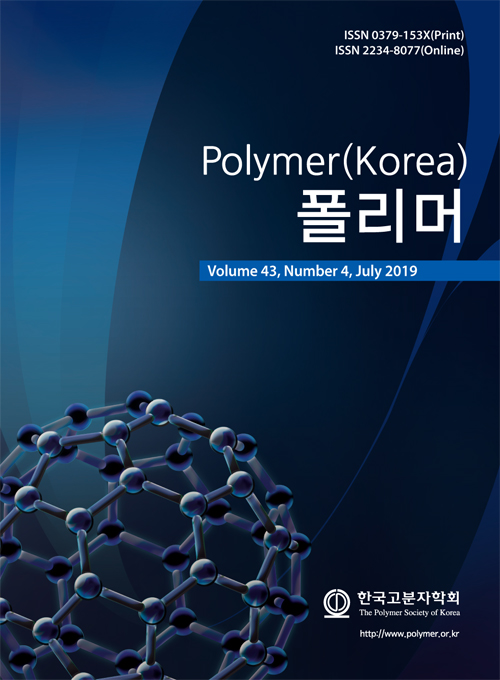- Crystallization-based Preparation Method of Polymer Systems for Temperature-responsive Control of Water Droplets
Department of Chemical Engineering and Materials Science, Chung-Ang University, 84, Heukseok-ro, Dongjak-gu, Seoul 06974, Korea
- 물방울의 온도감응성 제어를 위한 고분자 시스템의 결정화 기반 제조법
중앙대학교 공과대학 화학신소재공학부
Water supply is needed for the applications of microfluidic systems, triboelectric generators, self-cleaning systems on specific surfaces, etc. Especially, in the cases of self-cleaning technology, the surfaces of super-hydrophobic property are mainly used for cleaning by rainwater. However, in a region where rain is not frequent, periodic cleaning is impossible. In this study, we implemented a rolling water droplets system in which a thermosensitive hydrogel and a super hydrophobic substrate are used together. Poly(N-isopropylacrylamide) hydrogel having a lower critical solution temperature at about 32 ℃ and a crystallization-based method of preparing a superhydrophobic substrate were used. The fabricated system was able to successfully generate droplets and water flow on the superhydrophobic substrate in response to repeated temperature changes. This rolling water droplet system is a new water flow system that responds to temperature changes and can be effectively applied to a variety of future technologies.
물의 공급은 특정 표면의 자가청소 시스템부터 미세 유체시스템, 마찰 발전기 등의 활용을 위해 필요하다. 자가청소 기술의 경우 주로 초소수성 표면을 구성하여 빗물에 의한 청소능력을 가지는데, 건조 기후에서는 주기적인 청소가 불가능하다. 본 연구에서는 온도감응성 하이드로젤과 초소수성 기판을 사용하는 롤링 물방울 시스템을 구현하였다. 32 ℃ 부근에서 하한 용액 임계 온도를 가지는 poly(N-isopropylacrylamide) 하이드로젤과 결정화방법을 통한 초소수성 기판의 제조법을 사용하였다. 이 시스템은 반복적인 온도변화에 반응하여 물방울을 생성시켜 초소수성 기판 위를 흐르도록 설계되었다. 본 롤링 물방울 시스템은 온도 변화에 반응하는 새로운 물 흐름 시스템으로써 미래 다양한 기술에 효과적으로 적용될 수 있다.
Keywords: water flow, self-cleaning, superhydrophobic, hydrogel, poly(N-isopropylacrylamide)
- Polymer(Korea) 폴리머
- Frequency : Bimonthly(odd)
ISSN 0379-153X(Print)
ISSN 2234-8077(Online)
Abbr. Polym. Korea - 2023 Impact Factor : 0.4
- Indexed in SCIE
 This Article
This Article
-
2019; 43(4): 646-651
Published online Jul 25, 2019
- 10.7317/pk.2019.43.4.646
- Received on Apr 4, 2019
- Revised on Apr 18, 2019
- Accepted on May 13, 2019
 Correspondence to
Correspondence to
- Jonghwi Lee
-
Department of Chemical Engineering and Materials Science, Chung-Ang University, 84, Heukseok-ro, Dongjak-gu, Seoul 06974, Korea
- E-mail: leexx303@gmail.com










 Copyright(c) The Polymer Society of Korea. All right reserved.
Copyright(c) The Polymer Society of Korea. All right reserved.